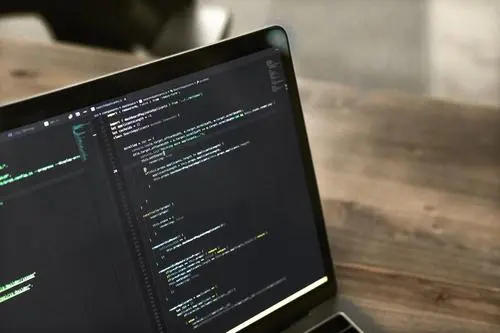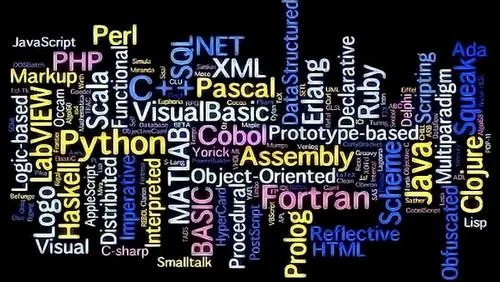
这里需要注意的是文件里的assets只要一个缩进即和flutter里的内容保持对齐,否则,会出问题。我遇到的是,没办法选择运行设备。
一、Layout原理Flutter布局Layout的核心就是Widget。在Flutter里,基本上任何东西都是Widget,甚至布局的模型。比如images、icon、text等你能在界面上看到的。你看不到的,如Row、Column等也是Widget。
复杂的Widget都是有单个widget组成的。
Container({
Key key,
this.alignment, this.padding, Color color, Decoration decoration, this.foregroundDecoration, double width, double height, BoxConstraints constraints, this.margin, this.transform, }) 可以发现,该UI Widget可以控制其中的Widget的padding、margin以及当前widget的宽高、border背景色等等。
Row:

Row({
Key key,
MainAxisAlignment mainAxisAlignment: MainAxisAlignment.start,
MainAxisSize mainAxisSize: MainAxisSize.max,
CrossAxisAlignment crossAxisAlignment: CrossAxisAlignment.center,
TextDirection textDirection,
VerticalDirection verticalDirection: VerticalDirection.down,
TextBaseline textBaseline,
List children: const [], }) Column:

Column({
Key key,
MainAxisAlignment mainAxisAlignment: MainAxisAlignment.start,
MainAxisSize mainAxisSize: MainAxisSize.max,
CrossAxisAlignment crossAxisAlignment: CrossAxisAlignment.center,
TextDirection textDirection,
VerticalDirection verticalDirection: VerticalDirection.down,
TextBaseline textBaseline,
List children: const [], }) 这里通过一个HelloWorld app来展示如何创建一个Widget并展示出来,并区分Material和非Material环境。
hello_word.dart里的代码如下:
class HelloWorld { static Widget helloWorld() { return new MaterialApp( title: 'Hello World', theme: new ThemeData( primarySwatch: Colors.blue, ), home: new Scaffold( appBar: new AppBar(title: new Text('Hello World')), body: new Center( child: new Text( "Hello World", style: new TextStyle(fontSize: 32.0), )), ), ); } static Widget hellWorldWithoutMaterial() { return new Container( decoration: new BoxDecoration(color: Colors.white), child: new Center( child: new Text( 'Hello World', textDirection: TextDirection.ltr, // 这一句必须有 style: new TextStyle(color: Colors.black, fontSize: 40.0), ), ), ); } } 而在展示上,主要的区别在于非Material下,没有Appbar、背景色和标题等,所有的内容都需要自定义。
1、Scaffold必须放在MaterialApp里面,否则会报错,大致如下:
══╡ EXCEPTION CAUGHT BY WIDGETS LIBRARY ╞═══════════════════════════════════════════════════════════
The following assertion was thrown building Scaffold(dirty, state: ScaffoldState#6f74d): No MediaQuery widget found. Scaffold widgets require a MediaQuery widget ancestor. The specific widget that could not find a MediaQuery ancestor was: Scaffold The ownership chain for the affected widget is: Scaffold ← MyApp ← [root] Typically, the MediaQuery widget is introduced by the MaterialApp or WidgetsApp widget at the top of your application widget tree. 2、非Material下Text的textDirection属性是必须的
??????到底什么是Material App?
三、在水平和垂直方向上Layout(Row、Column)class LayoutImagesH { static layoutImagesH() { MaterialApp material = new MaterialApp( home: new Scaffold( appBar: new AppBar( title: new Text( "Images H Layout", style: new TextStyle(color: Colors.white, fontSize: 20.0), ), ), body: _getLayoutContainer(), ), ); return material; } static _getLayoutContainer() { Row row = new Row( mainAxisAlignment: MainAxisAlignment.spaceEvenly, crossAxisAlignment: CrossAxisAlignment.center, children: [ _getRowsImage('images/pic1.jpg'), _getRowsImage('images/pic2.jpg'), _getRowsImage('images/pic3.jpg') ], ); Container cOntainer= new Container( padding: const EdgeInsets.all(15.0), color: Colors.grey, child: row, ); return container; } static _getRowsImage(imageStr) { return new Image.asset( imageStr, width: 100.0, ); } } class LayoutImagesV { static layoutImagesVSpaceEvenly() { return new Container( color: Colors.green, child: new Column( mainAxisAlignment: MainAxisAlignment.spaceEvenly, crossAxisAlignment: CrossAxisAlignment.center, children: [ new Image.asset('images/pic1.jpg'), new Image.asset('images/pic2.jpg'), new Image.asset('images/pic3.jpg'), ], ), ); } static layoutImagesVSpaceAround() { return new Container( color: Colors.green, child: new Column( mainAxisAlignment: MainAxisAlignment.spaceAround, crossAxisAlignment: CrossAxisAlignment.center, children: [ new Image.asset('images/pic1.jpg'), new Image.asset('images/pic2.jpg'), new Image.asset('images/pic3.jpg'), ], ), ); } static layoutImagesVSpaceBetween() { return new Container( color: Colors.green, child: new Column( mainAxisAlignment: MainAxisAlignment.spaceBetween, crossAxisAlignment: CrossAxisAlignment.center, children: [ new Image.asset('images/pic1.jpg'), new Image.asset('images/pic2.jpg'), new Image.asset('images/pic3.jpg'), ], ), ); } } 主轴的枚举如下:
enum MainAxisAlignment { start, end, center, /// 第一个和最后一个贴边,中间的平分 spaceBetween, /// 第一个和最后一个距离边的距离是它与中间的距离的一半 spaceAround, /// 完全平分 spaceEvenly, } 使用Expanded Widget,它继承自Flexible,主要是通过其中flex属性来控制,默认整个Expanded里的flex都是1,即平分。我们可以通过控制flex来控制每个Widget所占的大小。

经过尝试,你会发现,只要总尺寸超过了容器的限制,就会出现这种问题。要解决这种问题,目前来看,一是控制图片的尺寸,一个就是使用Expanded 的Widget。
代码如下:
class ExpandedImages { static expandedImages() { return new Container( color: Colors.green, // margin: const EdgeInsets.all(15.0), child: new Row( textDirection: TextDirection.ltr, // mainAxisAlignment: MainAxisAlignment.spaceEvenly, children: _getRowChildren(), ), ); } static expandImagesWithMaterial() { return new MaterialApp( home: new Scaffold( appBar: new AppBar( title: new Text('Expanded') ), body: new Center( child: new Row( crossAxisAlignment: CrossAxisAlignment.center, children: _getRowChildren(), ), ) ), ); } static _getRowChildren() { return [ // new Expanded(child: new Image.asset("images/pic1.jpg")), // new Expanded(flex:2, child: new Image.asset("images/pic2.jpg")), // new Expanded(child: new Image.asset("images/pic3.jpg")) new Expanded(child: new Image.asset("images/expand1.jpg")), new Expanded(flex:2, child: new Image.asset("images/expand2.jpg")), new Expanded(child: new Image.asset("images/expand3.jpg")) ]; } } 
看到这里其实也明白了,上面的水平方向和垂直方向的布局是有问题的。
五、压缩空间一般的Row和Column的布局都是尽可能大的利用Space,如果此时不想要这些space,那么可以使用相应的mainAxisSize的值来控制,它只有min和max两个值,默认是max,即我们看见的那种情况。如果设置了该值为min,那么mainAxisAlignment的后面的几个值对其不再起作用。
下面是测试代码:
class _MyHomePageState extends State<_MyHomePage> { @override Widget build(BuildContext context) { // TODO: implement build return new Scaffold( appBar: new AppBar(title: new Text("Packing Widget")), body: new Center( child: new Row( mainAxisAlignment: MainAxisAlignment.spaceAround, mainAxisSize: MainAxisSize.min, // crossAxisAlignment: CrossAxisAlignment.center, children: [ new Icon(Icons.star, color: Colors.green[500]), new Icon(Icons.star, color: Colors.green[500]), new Icon(Icons.star, color: Colors.green[500]), new Icon(Icons.star, color: Colors.grey), new Icon(Icons.star, color: Colors.grey), ], ), ) ); } } 总体来说,所有的Widget可以分为两类:Standard Widget和Material Component。Standard Widget可以在Material App和非Material App中使用,但是Material Component只能在Material App中使用。
常用的是下面四种:

 京公网安备 11010802041100号 | 京ICP备19059560号-4 | PHP1.CN 第一PHP社区 版权所有
京公网安备 11010802041100号 | 京ICP备19059560号-4 | PHP1.CN 第一PHP社区 版权所有